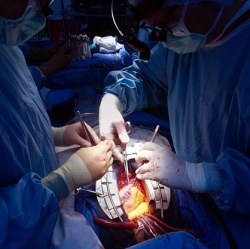
The first new antibiotic to be discovered in nearly 30 years has been hailed as a paradigm shift in the fight against the growing resistance to drugs. Teixobactin has been found to treat many common bacterial infections such as tuberculosis, septicaemia and C. diff, and could be available within five years.
But more importantly it could pave the way for a new generation of antibiotics because of the way it was discovered. Scientists have always believed that the soil was teeming with new and potent antibiotics because bacteria have developed novel ways to fight off other microbes. But 99 per cent of microbes will not grow in laboratory conditions leaving researchers frustrated that they could not get to the life-saving natural drugs.
Now a team from Northeastern University in Boston, Massachusetts, have discovered a way of using an electronic chip to grow the microbes in the soil and then isolate their antibiotic chemical compounds. They discovered that one compound, Teixobactin, is highly effective against common bacterial infections Clostridium difficile, Mycobacterium tuberculous and Staphylococcus aureus.
Professor Kim Lewis, Director of the Antimicrobial Discovery Centre said: “Apart from the immediate implementation, there is also I think a paradigm shift in our minds because we have been operating on the basis that resistance development is inevitable and that we have to focus on introducing drugs faster than resistance.“Teixobactin shows how we can adopt an alternative strategy and develop compounds to which bacteria are not resistant.”
The first antibiotic Penicillin, was discovered by Alexander Fleming in 1928 and more than 100 compounds have been found since, but no new class has been found since 1987.
